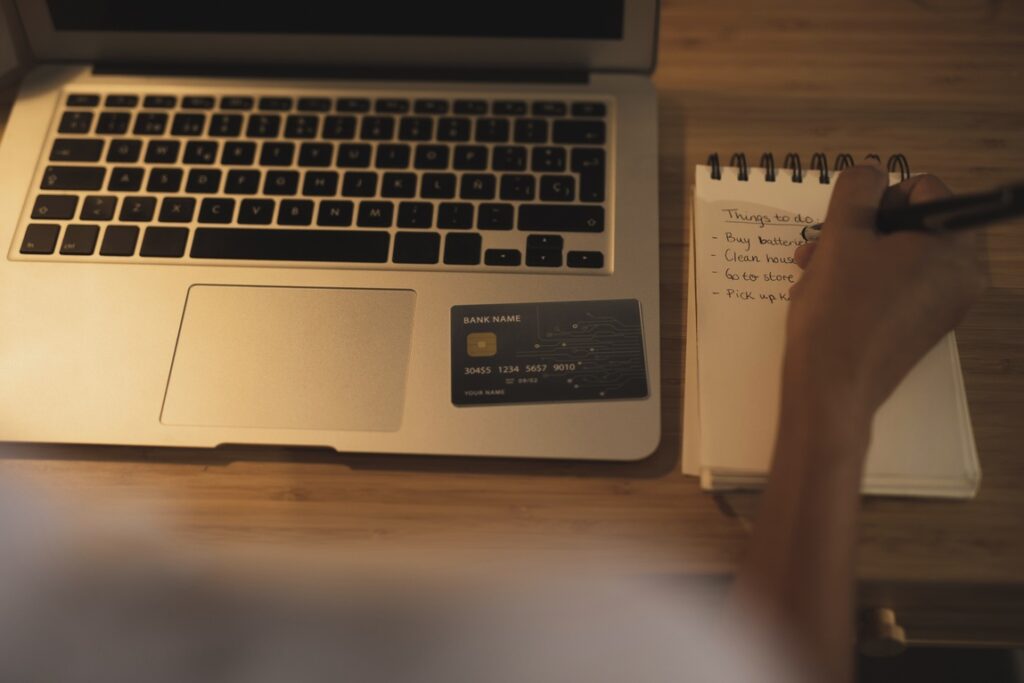Credit card history is more than a record of past transactions; it’s a financial biography that tells the story of how you’ve managed credit over time. As a key factor in determining creditworthiness, it influences many aspects of personal finance. Understanding this intricate narrative is crucial for maintaining a healthy financial life.

Definition of Credit Card History
Credit card history refers to the documented record of an individual’s credit card usage. This includes details about payment timeliness, outstanding balances, and the nature of the transactions. Essentially, it’s a comprehensive log that lenders use to gauge credit behavior and predict future financial reliability.
Importance of Understanding Credit Card History
Grasping the nuances of credit card history is vital. It affects your ability to secure loans, rent apartments, and even impacts job prospects in some industries. A clear understanding allows you to make informed decisions that enhance your financial standing, rather than inadvertently damaging it.
How Credit Card History is Created
The Role of Credit Card Issuers
Credit card issuers are pivotal in creating your credit history. They report your credit activities to the major credit bureaus. Every payment, every balance, and every new line of credit opened is meticulously logged and shared with these bureaus, forming the basis of your credit profile.
Transactions and Payments
Each transaction and payment you make adds to your credit history. Timely payments contribute positively, signaling reliability and fiscal responsibility. Conversely, missed or late payments can tarnish your record, indicating potential financial distress or neglect.
Impact of Credit Limits
Your credit limit—the maximum amount you can charge on your card—also plays a significant role. High utilization of your credit limit can suggest over-reliance on borrowed funds, while maintaining a lower balance relative to your limit is seen as prudent management.

Components of Credit Card History
Payment History
Payment history is the most critical component. It records whether you’ve paid past credit obligations on time. Lenders prioritize this aspect because it’s a strong indicator of future payment behavior.
Credit Utilization
Credit utilization measures the ratio of your current credit card balances to your credit limits. A lower ratio suggests better credit management, while higher utilization can be a red flag for potential lenders.
Length of Credit History
The length of your credit history matters. A longer history provides more data for lenders to assess, giving them a clearer picture of your credit behavior over time. This includes the age of your oldest account, the age of your newest account, and the average age of all your accounts.
New Credit Inquiries
Every time you apply for new credit, it generates a hard inquiry on your report. Multiple inquiries in a short period can negatively impact your score, as it may indicate financial instability or overextension.
Types of Credit Used
Diversity in credit types—such as credit cards, mortgages, and auto loans—can positively influence your credit score. It demonstrates the ability to manage different forms of credit responsibly.
The Evolution of Credit Card History
Early Days of Credit Cards
In the early days, credit card history was recorded manually and shared sparingly. Limited data meant that creditworthiness assessments were less accurate and more prone to error.
Digital Transformation and Data Tracking
Today, the digital revolution has transformed credit card history tracking. Advanced algorithms and big data analytics provide real-time updates and more precise evaluations of credit behavior. This evolution enhances the accuracy and reliability of credit assessments.

How Credit Card History Affects Your Credit Score
Breakdown of Credit Score Factors
Your credit score is influenced by various factors, including payment history, credit utilization, length of credit history, new credit inquiries, and types of credit used. Each factor has a specific weight in calculating your overall score.
Weight of Credit Card History in Credit Scoring Models
Payment history and credit utilization are particularly significant. Together, they can account for up to 65% of your credit score, making them the most critical areas to monitor and manage.
Common Myths About Credit Card History
Debunking Popular Misconceptions
Many myths surround credit card history. For instance, some believe that carrying a small balance improves credit scores. In reality, paying off balances in full each month is more beneficial.
Truth vs. Fiction
Understanding the truth behind these myths is essential. Accurate information allows for better financial decisions and more effective credit management.
How to Check Your Credit Card History
Accessing Your Credit Report
You can access your credit report from the major credit bureaus—Equifax, Experian, and TransUnion—typically for free once a year. Reviewing your report helps you stay informed about your credit status and spot any inaccuracies.
Reading and Understanding Credit Card Statements
Credit card statements provide a monthly summary of your account activity. Understanding these statements is key to managing your credit effectively, as they detail payments, transactions, fees, and interest rates.
The Impact of Positive Credit Card History
Benefits for Loan Approvals
A positive credit history increases your chances of loan approval. Lenders view a solid credit history as an indication of low risk, making them more willing to extend credit.
Lower Interest Rates
Good credit history often results in lower interest rates. Lenders reward reliable borrowers with more favorable terms, which can save you significant money over time.
Enhanced Credit Limits
Consistently managing credit well can lead to increased credit limits. Higher limits provide more financial flexibility and can improve your credit utilization ratio, further boosting your credit score.
The Consequences of Negative Credit Card History
Penalties and Fees
Negative credit history can lead to penalties and fees, such as higher interest rates and late payment charges. These additional costs can exacerbate financial difficulties.
Higher Interest Rates
Poor credit history often results in higher interest rates on loans and credit cards. Lenders charge more to compensate for the perceived risk, increasing your overall debt burden.
Difficulty in Securing New Credit
A tarnished credit history can make it challenging to secure new credit. Lenders may be hesitant to extend credit, fearing that you may default on your obligations.
How to Improve Your Credit Card History
Tips for Timely Payments
Set up automatic payments or reminders to ensure you never miss a due date. Consistent, timely payments are the most effective way to build a positive credit history.
Managing Credit Utilization
Aim to keep your credit utilization below 30%. Pay down high balances and avoid maxing out your cards to improve this crucial aspect of your credit score.
Strategies for Building Credit
Building credit takes time and strategy. Consider secured credit cards or becoming an authorized user on a responsible person’s account to help establish or rebuild your credit.
The Role of Credit Bureaus in Credit Card History
Major Credit Bureaus Explained
The three major credit bureaus—Equifax, Experian, and TransUnion—collect and maintain your credit information. They compile this data into credit reports that lenders use to assess creditworthiness.
How Credit Information is Collected and Reported
Credit bureaus gather information from various sources, including lenders and public records. They update your credit report regularly, reflecting your latest credit activities.
Credit Card History and Identity Theft
Recognizing Signs of Fraud
Unusual account activity, unfamiliar transactions, and unexpected credit inquiries can signal identity theft. Monitoring your credit report can help you spot these red flags early.
Protecting Your Credit Information
Safeguard your credit information by using strong, unique passwords, and being cautious about sharing personal details. Consider credit monitoring services for additional protection.
The Future of Credit Card History
Emerging Trends and Technologies
The future of credit card history will likely involve more advanced data analytics and AI-driven insights. These technologies promise greater accuracy and personalization in credit assessments.
Predictions for the Credit Industry
We can expect continued innovations that make credit management more transparent and consumer-friendly. Increased regulation and enhanced security measures will also play significant roles in shaping the future landscape.
BOTTOM LINE
Understanding credit card history is crucial for financial health. By grasping its components, impacts, and management strategies, you can navigate the credit landscape effectively, ensuring a stable and prosperous financial future.
Frequently Asked Questions (FAQs)
Which bank started the credit card?
The concept of the modern credit card began with the introduction of the BankAmericard by Bank of America in 1958. This card, later known as Visa, was the first widely accepted credit card system.
Why do credit cards exist?
Credit cards exist to provide a convenient and flexible way for individuals to make purchases and borrow money. They offer a line of credit that allows users to buy goods and services now and pay later, often with additional benefits like rewards and fraud protection.
Source: The Balance – Why Credit Cards Exist
What is the use of a credit card?
The primary use of a credit card is to facilitate purchases by borrowing money from the card issuer up to a certain limit. They are also used for cash advances, building credit history, and earning rewards or benefits such as cashback and travel points.
Source: NerdWallet – What is a Credit Card?
What are major credit cards?
Major credit cards include Visa, MasterCard, American Express, and Discover. These cards are widely accepted and offer various benefits such as rewards programs, travel insurance, and purchase protection.
Source: Credit Karma – Major Credit Card Networks
How did credit cards change the world?
Credit cards revolutionized personal finance by providing a convenient and secure method of payment, reducing the need for cash and checks. They also facilitated the growth of consumer credit, enabling people to manage expenses and build credit history more effectively.
Which is better, Visa or MasterCard?
Both Visa and MasterCard offer extensive global acceptance and similar benefits. The choice between them often depends on specific features, rewards programs, and personal preferences. Visa tends to have a broader acceptance worldwide, while MasterCard may offer different reward structures.
Source: Forbes – Visa vs. MasterCard
What is the difference between debit and credit cards?
Debit cards withdraw funds directly from a linked checking account, while credit cards allow users to borrow money up to a credit limit and repay later. Credit cards often come with rewards and credit-building benefits, whereas debit cards offer more direct access to your own funds.
Source: Bankrate – Debit vs. Credit Cards
What is the history of cards?
The history of cards dates back to the early 20th century, with the first charge cards emerging in the 1920s and 1930s. The modern credit card era began in the 1950s with the introduction of the BankAmericard, now known as Visa, followed by MasterCard and other major credit card systems.
Source: Investopedia – History of Credit Cards
What is the definition of a credit card?
A credit card is a financial tool issued by a bank or financial institution that allows the cardholder to borrow funds up to a specified credit limit to make purchases or obtain cash advances, with the obligation to repay the borrowed amount plus interest.
Source: Merriam-Webster – Credit Card Definition
What was the first ATM card?
The first ATM card, introduced in 1967 by Barclays Bank, was used to access automated teller machines (ATMs) for cash withdrawals. This innovation revolutionized banking by providing 24/7 access to cash and account information.
Source: Barclays – The History of ATMs
When was the first bank card?
The first bank card was introduced by Bank of America in 1958 as the BankAmericard, which later became Visa. This card marked the beginning of the modern credit card industry.
Source: The Balance – History of Credit Cards
What is the CVV number?
The CVV (Card Verification Value) number is a three or four-digit security code printed on credit and debit cards. It is used to verify the card’s authenticity and protect against fraudulent transactions, especially during online purchases.
Source: NerdWallet – What is CVV?
What is the history of card making?
The history of card making dates back to the early 20th century with the creation of the first charge cards. Over time, technological advancements in materials and manufacturing processes have led to the sophisticated plastic cards used today, incorporating magnetic stripes, EMV chips, and contactless technology.
Source: CreditCards.com – History of Credit Cards
What is debit and credit?
Debit refers to transactions made using a debit card, which withdraws money directly from a checking account. Credit refers to transactions made with a credit card, where the user borrows money up to a credit limit and repays the amount, often with interest.
Source: Investopedia – Debit vs. Credit
What is credit card Wikipedia?
Credit Card Wikipedia likely refers to the Wikipedia page on credit cards, which provides detailed information on the history, types, functions, and industry standards related to credit cards.
Source: Wikipedia – Credit Card
How old is debit card?
Debit cards were first introduced in the 1960s. The concept became more widely adopted with the introduction of ATM cards, which allowed for electronic access to funds and laid the foundation for modern debit card systems.









